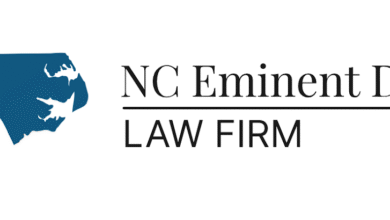Stock vs. Custom Food Photography: What’s Best for Your Restaurant or Blog?

In today’s digital world, visuals are everything—especially when it comes to food. Whether you’re running a restaurant, a food blog, or a catering business, high-quality images are essential to capturing attention, engaging audiences, and ultimately driving sales or readership. But when it comes to choosing food photography, should you invest in custom images or rely on stock photos?
The decision between stock and custom food photography depends on several factors, including budget, brand identity, and the level of authenticity you want to convey. Both options have their advantages and drawbacks, and understanding the right fit for your business can help you maximize the impact of your food visuals.
This article breaks down the pros and cons of stock and custom food photography, providing insights into when and how each can be used to enhance your restaurant’s or blog’s visual appeal.
Why Food Photography Matters
Before diving into the stock vs. custom debate, it’s important to recognize why food photography is critical for success in the food industry and online content creation.
- First Impressions Matter: People eat with their eyes first. A visually appealing dish is more likely to attract customers to a restaurant or readers to a blog.
- Stronger Engagement: High-quality food images generate higher engagement rates on social media, leading to more shares, likes, and interactions.
- Increased Sales & Conversions: Well-presented menu items can drive restaurant sales, while captivating food images in blog posts can improve click-through rates.
- Brand Identity: Consistent, high-quality visuals help establish a brand’s tone, professionalism, and uniqueness.
Given the importance of strong imagery, let’s explore the differences between stock and custom food photography to help determine which is best for your needs.
Stock Food Photography: The Budget-Friendly Solution
Stock photos are pre-shot images available for purchase or download, offering a quick and easy solution for businesses and content creators who need professional-looking visuals without the hassle of organizing a photoshoot.
Pros of Stock Food Photography
- Cost-Effective
- Custom photography can be expensive, especially for small restaurants and new bloggers. Stock images provide an affordable alternative without sacrificing quality.
- Time-Saving
- Instead of planning a shoot, stock photos can be downloaded instantly, making them ideal for last-minute promotions or quick blog updates.
- Variety and Accessibility
- With thousands of images available, stock libraries offer a wide range of food styles, cuisines, and compositions. You can find everything from gourmet plated dishes to casual comfort food shots.
- Professional Quality Without the Effort
- Stock food images are often shot by professional photographers, ensuring sharp, well-lit, and appetizing visuals.
Cons of Stock Food Photography
- Lack of Originality & Uniqueness
- Stock images are widely used, meaning your competitors (or unrelated businesses) might be using the same images.
- Your food brand may struggle to stand out if the visuals don’t reflect your actual dishes.
- Potential Inaccuracy
- Stock photos may not accurately represent your menu or recipes, which could lead to disappointed customers if what they receive doesn’t match the image they saw online.
- Limited Customization
- Since stock images are pre-made, you have little control over the lighting, styling, or specific ingredients featured.
Custom Food Photography: The Branding Powerhouse
Custom food photography involves hiring a professional photographer (or taking your own photos) to capture images that specifically reflect your dishes, restaurant ambiance, or blog’s unique style.
Pros of Custom Food Photography
- Authenticity and Originality
- Unlike stock photos, custom food photography allows you to showcase your actual menu items or homemade recipes exactly as they appear.
- This builds trust with customers who expect to receive what they see online.
- Brand Consistency
- Custom images align perfectly with your brand’s color scheme, plating style, and storytelling, ensuring a cohesive visual identity.
- Higher Engagement & Emotional Connection
- Studies show that people engage more with authentic, original images rather than generic stock photos.
- Custom food shots allow you to capture behind-the-scenes moments, chef profiles, and action shots that create an emotional bond with your audience.
- Complete Creative Control
- You have full control over the styling, props, and lighting, allowing you to tell your story in a unique, visually compelling way.
Cons of Custom Food Photography
- Higher Costs
- Hiring a professional food photographer, renting a studio, and food styling can be costly, making it less ideal for small businesses with limited budgets.
- Time-Intensive
- Planning, shooting, and editing custom food photography takes time, making it less convenient for quick marketing needs.
- Ongoing Effort Required
- Unlike stock photos that can be used immediately, custom food photography requires continuous updates as menus change or new dishes are introduced.
When to Use Stock Photos vs. Custom Food Photography
Each option has its place depending on your needs, budget, and goals. Below are scenarios where each type of photography is best suited:
| Use Stock Photos When… | Use Custom Food Photography When… |
| You need high-quality images quickly for social media, blog posts, or email marketing. | You want to showcase your actual dishes, ingredients, or restaurant environment. |
| You’re a new food blogger or restaurant with a tight budget. | Your business relies heavily on visuals for branding (e.g., fine dining restaurants, gourmet food blogs). |
| You’re running a seasonal promotion and don’t have time for a full photoshoot. | You want complete creative control over styling and presentation. |
| Your brand focuses on general food-related topics rather than specific recipes or restaurant dishes. | Your audience expects authenticity—for example, a farm-to-table restaurant showcasing locally sourced ingredients. |
Blending Both for a Balanced Visual Strategy
For many restaurants and food bloggers, the best solution is a mix of both stock and custom food photography.
- Use stock images for quick-turnaround content, like blog headers, generic ingredient images, or background visuals for marketing materials.
- Invest in custom photography for signature dishes, restaurant branding, or recipe-specific blog posts that require accuracy and originality.
- Enhance stock images by adding overlays, filters, or branding elements to make them feel more unique.
Final Thoughts: Choosing the Best Photography for Your Food Brand
When deciding between stock vs. custom food photography, consider your goals, audience expectations, and resources.
- Stock photos are an affordable, quick solution for filling gaps in your content strategy.
- Custom food photography is a long-term investment in brand authenticity and storytelling.
For restaurants looking to build trust and attract diners, custom imagery is often the best choice. For food bloggers who cover broad topics, stock photos can help maintain a professional aesthetic without constant photoshoots. Ultimately, a combination of both can provide the perfect recipe for a visually stunning brand presence.



